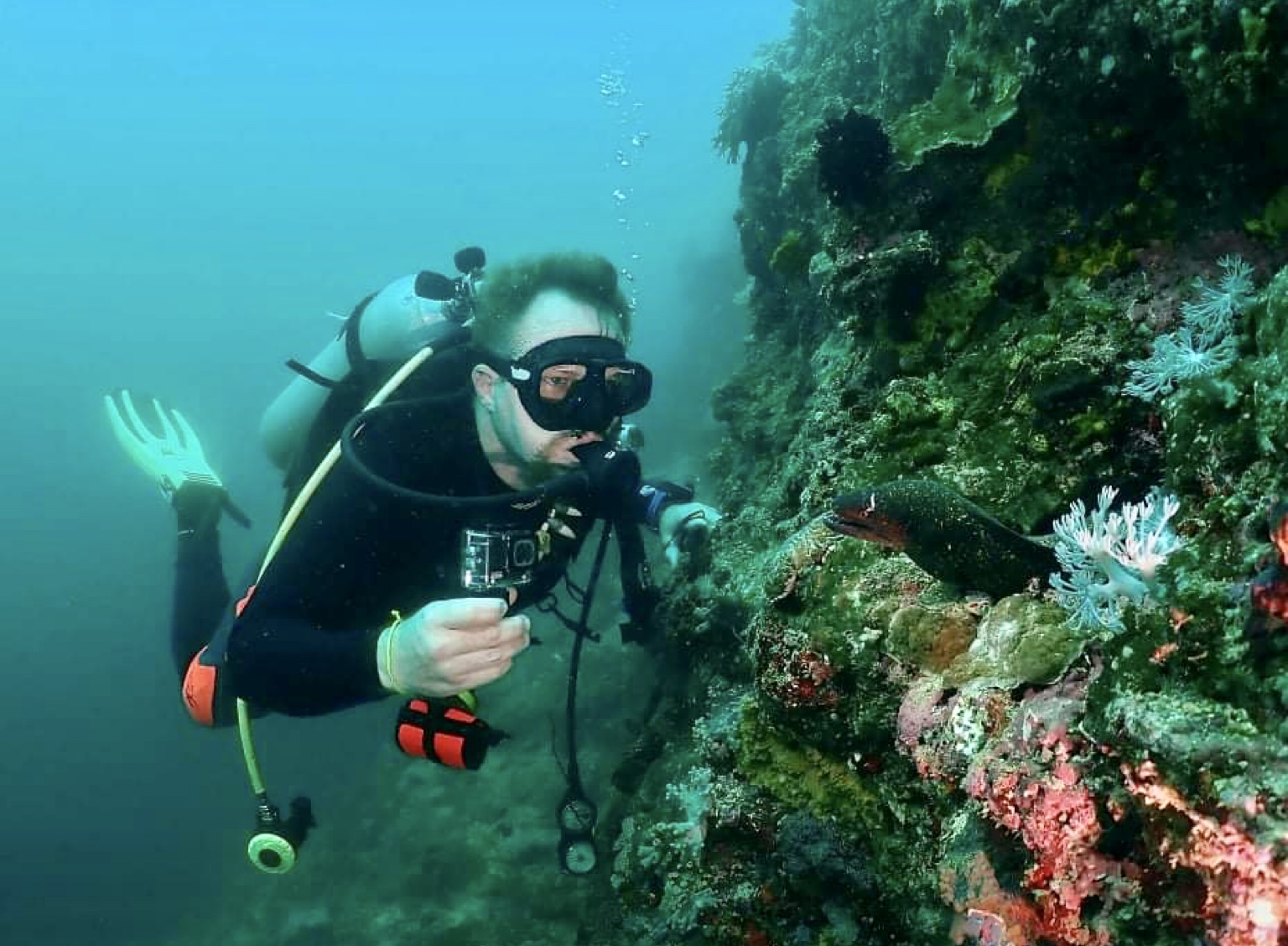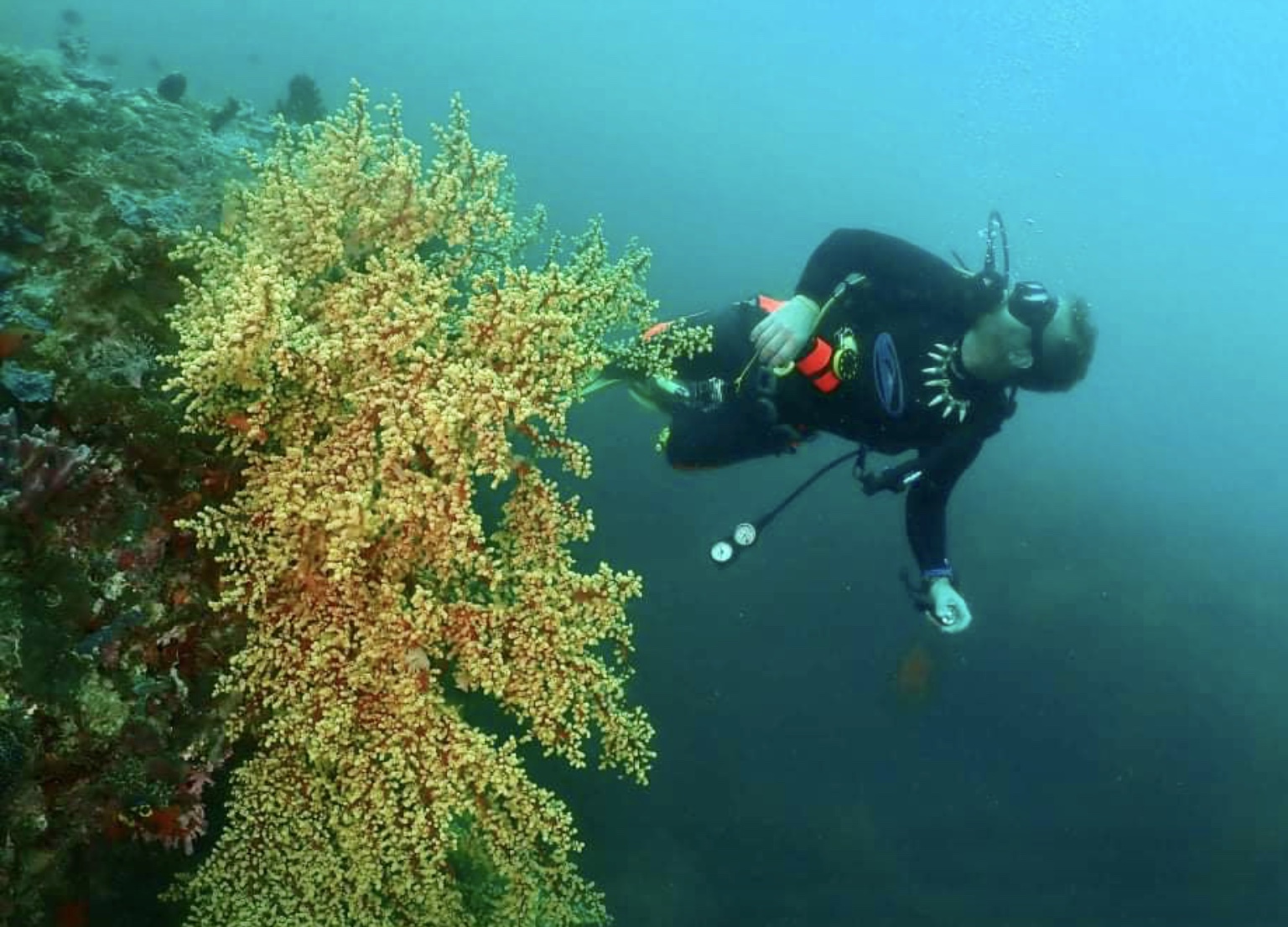Text by Henrylito D. Tacio
Photo credits: Darrell Blatchley
If Filipinos want to have a steady supply of its second staple food – fish – they have to preserve and protect their ecologically-fragile coral reefs. Although some of the country’s coral reefs are on the verge of extinction, there are some areas where they still thrive in the pristine state as they are well protected.
Early this year, the Davao regional office of the Department of Environment and Natural Resources (DENR) conducted scuba diving in various areas in Davao Occidental to check on the conditions of the coral reef and other living organisms.
The first dive site was in barangay Bukid in San Jose Abad Santos. About 500 meters offshore, the reef was observed: “to be in good physical condition due to the presence of a variety of fish species.”
“As fish and other marine species thrive in the said area, we are looking forward to declaring it as one of the marine protected areas in Region XI,” said Bagani Fidel A. Evasco, the DENR’s regional executive director.
In barangay Calian in Don Marcelino, the same observation was made: good physical condition. “Most of the fish that were observed are residents of the reef, which means that it is where they inhabit and reproduce,” the DENR said.
The environment department also conducted a rapid coral reef assessment in barangay Tubalan in Malita. “The coral reef outside of Tubalan cove presents a variety of marine species like fish and sea turtles and is in excellent condition,” the report stated.
The excellent status of the area was also attributed to the Bantay Dagat patrollers “who are regularly monitoring and patrolling within its municipal waters” as part of the tasks of the local government unit’s preservation and protection mechanism.
Evasco described coral reefs as “highly fragile.” He went on further explaining that “the fish that live and grow on coral reefs are important food and livelihood sources for the people, especially in coastal areas.”
The coral reefs of Davao Occidental are part of Davao Gulf, which has an area of 308,000 hectares that cuts into the island of Mindanao from the Philippine Sea. Unfortunately, over 80% of Davao Gulf’s coral reefs are already degraded, the Bureau of Fisheries and Aquatic Resources (BFAR) reported in 2006. “The coral reefs in almost all areas of Davao Gulf are in bad condition,” it said.
Only one-fourth of the coral cover was live, manta tow surveys covering 33.8 kilometers of reefs in the gulf showed. Of the 19 areas surveyed, only the corals in Tubalan were in very good condition. Areas with poor values of 10% and below were found in Agdao, Malita, and Valez (Toril) in Davao City.


The coastlines of the cities of Panabo and Tagum – which contain “the most-dense concentrations of fish larvae in the entire gulf” – fare no better. “The coral reefs, which used to be extremely rich, are already buried,” said Harry D. Morris, a British-Filipino marine biologist. “What’s left behind are mostly coral skeletons and small patches still struggling to survive.”
Leading marine scientists ranked the coral reefs in the Philippines as “among the most threatened in Southeast Asia.”
“Nowhere else in the world are coral reefs abused as much as the reefs in the Philippines,” deplored Don E. McAllister, who once studied the cost of coral reef destruction in the country.
In its website, the BFAR singled out destructive fishing techniques as among the largest contributors to reef degradation.
“Muro-ami, a technique that involved sending a line of divers to depths of 10-30 meters with metal weights to knock on corals in order to drive fish out and into waiting nets was extremely damaging to reefs, leading to its ban in 1986,” the BFAR reported.
But that’s just one. “Rampant blast fishing and sedimentation from land-based sources have destroyed 70% of fisheries within 15 square kilometers of the shore in the Philippines, which were some of the most productive habitats in the world,” the BFAR noted.
Cyanide fishing, employed since 1962 to collect aquarium fish, is another destructive fishing method. “Using cyanide tablets obtained from drugstores, collectors squirt the cyanide-laced water solution from plastic bottles on coral formations where marine fishes abound,” explains Dr. Rafael D. Guerrero, a national scientist with the National Academy of Science and Technology.
Despite several attempts to stop these destructive fishing methods – through increased enforcement, larger penalties, and educational campaigns – they persevere. “Many fishers have brought destructive practices to new areas,” the BFAR said. “Many operations have shifted to more remote, pristine areas such as the Palawan group of islands, the Sulu archipelago, parts of the Visayas, and western Mindanao.”
Coastal development, farming, aquaculture, and land-cover change have also threatened the country’s coral reef ecosystem. “Over 80% of original tropical forests and mangroves have been cleared, increasing sediment outflow onto reefs,” the BFAR said. “Mangroves continue to be cut and the areas converted to fishponds, a change that allows more nutrients and sediment to reach reefs.”
Aside from human activities, natural causes of destruction among coral reefs also occur. These include extremely low tide, high temperature of surface water, predation, and the mechanical action of currents and waves.
Extremely low tides usually expose corals to sunlight and to freshwater runoff, both of which, according to marine scientists, is lethal for coral reefs if they are exposed for several hours.
High temperature of surface water is exacerbated by abnormally low tides which leave shallow reefs exposed to sunlight, rainfall, and freshwater flowing. These environmental disturbances, experts claim, cause reefs to lose 70% to 90% of their living coral cover to depths of 15-18 meters.
In recent years, corals are exhibiting a new kind of degradation: massive bleaching.
“The first ever mass-bleaching event occurred in 1998-99,” the BFAR reported. “It began at Batangas in June 1998 and then proceeded nearly clockwise around the country, correlating with anomalous sea-surface temperatures. Most reefs of northern Luzon, west Palawan, the Visayas, and parts of Mindanao were affected.”
Corals are coelenterate animals (ray-like invertebrates) that form heavy skeletons of lime, science says. Encrusting corralling algae grow on their surface and crevices, cementing them lightly to form reefs. Most reefs grow in depths of 25 meters or less.
The Philippines is home to over 400 local species of corals, which is more than what is found in the famous Great Barrier Reef of Australia, according to studies.
There are three major types of coral reefs, said Dr. Angel C. Alcala, former DENR head. These are fringing type (those found on the edges of islands and which constitutes 30% of the country’s coral reefs); the barrier type (best exemplified by the Dajanon Reef of Central Visayas); and the atoll (of which the Tubbataha and Cagayan Reef in the Sulu Sea are ideal examples).
In the Philippines, an estimated 10%-15% of the total fisheries come from coral reefs. About 80%-90% of the income of small island communities comes from fisheries, Dr. Alcala said. “Coral reef fish yields range from 20 to 25 metric tons per square kilometer per year for healthy reefs,” he said.

